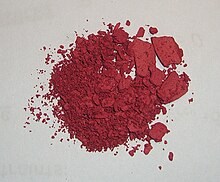Estimation Of Nickel Ii Using Dimethylglyoxime Dmg
Dimethylglyoxime (DMG) is widely used and for the spectrophotometric determination of nickel 3,4 it has also been used for separation and preconcentration of Ni by liquid-liquid extraction 5 or solid phase extraction 6-8 but all of these separation methods suffer from lack of selectivity.
- Estimation Of Nickel Ii Using Dimethylglyoxime Dmg Free
- Estimation Of Nickel Ii Using Dimethylglyoxime Dmg Download
- Estimation Of Nickel Ii Using Dimethylglyoxime Dmg 1
- How To Use Dimethylglyoxime
| Physical Chemistry Virtual Lab Physical chemistry (also called physicochemistry) is the explanation of macroscopic, microscopic, atomic, subatomic, and particulate phenomena in chemical systems in terms of physical concepts; sometimes using the principles, practices and concepts of physics like thermodynamics, quantum chemistry, statistical mechanics and dynamics. Spectrophotometry Cryoscopy Ebullioscopy EMF measurement Determination of Viscosity of Organic Solvents Adsorption Isotherm Verification of Tafel Equation Determination of Viscosity Average Molecular Weight of Polymer Calorimetry -Water equivalent Calorimetry Calorimetry -Heat of Neutralization |
| Organic Chemistry Virtual Lab Organic chemistry is a discipline within chemistry which involves the scientific study of the structure, properties, composition, reactions, and preparation (by synthesis or by other means) of chemical compounds that contain carbon. Detection of Functional Groups Detection of Elements: Lassaigne鈥檚 Test Separation of Compounds Using Column Chromatography Purification by Fractional distillation/crystallisation Purification by Steam distillation/crystallisation Laser Flash Photometer Organic Preparations - Allylation of Isatin Estimation of Aspirin Estimation Of Glucose Calculation of 位max of Organic Compounds Using Woodward Fieser Rules |
| Inorganic Chemistry Virtual Lab Inorganic chemistry is the branch of chemistry concerned with the properties and behavior of inorganic compounds. This field covers all chemical compounds except the myriad organic compounds (carbon based compounds, usually containing C-H bonds). Water analysis-Determination of Physical parameters Water analysis-Determination of Chemical parameters Acid Base Titration Gravimetric Estimation of Barium Gravimetric Estimation of Nickel Crystal Field Theory Group Theory Alloy Analysis (Brass) Soil Analysis-Determination of Specific conductivity of Soil Soil Analysis-Determination of pH of Soil |
| Advanced Analytical Chemistry Virtual Lab Analytical chemistry is the branch of chemistry concerned with studying the properties of materials and development of tools used to analyze materials. It is the science of sampling, defining, isolating , concentrating and preserving samples. Soil Analysis-Determination of Available Organic Carbon content in the Soil Soil Analysis-Determination of Available Nitrogen content in the Soil by Kjeldahl method Soil Analysis-Determination of Available Phosphorus content in the Soil by Bray's method Electrogravimetric Estimation of Metals Estimation of Phosphate Content in Soft Drinks Flame Photometry Polarography - Determination of Unknown Concentration of Cadmium Polarography - Determination of Unknown Concentration of Vitamin C |
| Names | |
|---|---|
| IUPAC name nickel;N-[(Z)-3-nitrosobut-2-en-2-yl]hydroxylamine | |
| Other names | |
| Identifiers | |
3D model (JSmol) | |
| ChemSpider | |
| EC Number | |
PubChemCID | |
| |
| |
| Properties | |
| C8H14N4NiO4 | |
| Molar mass | 288.917 g·mol−1 |
| Appearance | red solid |
| Density | 1.698 g/cm3 |
| Hazards | |
| GHS pictograms | |
| GHS Signal word | Warning |
| H315, H317, H319, H335, H351 | |
| P201, P202, P261, P264, P271, P272, P280, P281, P302+352, P304+340, P305+351+338, P308+313, P312, P321, P332+313, P333+313, P337+313, P362, P363, P403+233, P405, P501 | |
Except where otherwise noted, data are given for materials in their standard state (at 25 °C [77 °F], 100 kPa). | |
| Infobox references | |
Nickel bis(dimethylglyoximate) is the coordination complex with the formula Ni[ONC(CH3)C(CH3)NOH]2. The compound is a bright red solid. It achieved prominence for its use in the qualitative analysis of nickel.[1]
Structure[edit]
Nickel(II) is square planar.[2] It is surrounded by two equivalents of the conjugate base (dmgH−) of dimethylglyoxime (dmgH2). The pair of organic ligands are joined through hydrogen bonds to give a macrocyclic ligand. The complex is distinctively colored and insoluble leading to its use as a chelating agent in the gravimetric analysis of nickel.
The use of dimethylglyoxime as a reagent to detect nickel was reported by L. A. Chugaev in 1905.[3]
To install from a.dmg file you usually do the following:. A.dmg file is kind of like an USB stick in a file and can be handled more or less the same way. How do dmg deliver their packages.
Estimation Of Nickel Ii Using Dimethylglyoxime Dmg Free

Estimation Of Nickel Ii Using Dimethylglyoxime Dmg Download
References[edit]
Estimation Of Nickel Ii Using Dimethylglyoxime Dmg 1
- ^Greenwood, Norman N.; Earnshaw, Alan (1997). Chemistry of the Elements (2nd ed.). Butterworth-Heinemann. ISBN978-0-08-037941-8.
- ^Donald E. Williams, Gabriele Wohlauer, R. E. Rundle (1959). 'Crystal Structures of Nickel and Palladium Dimethylglyoximes'. J. Am. Chem. Soc. 81: 755–756. doi:10.1021/ja01512a066.CS1 maint: uses authors parameter (link)
- ^Tschugaeff, Lev (1905). 'Über ein neues, empfindliches Reagens auf Nickel' [About a new, sensitive reagent on nickel] (PDF). Berichte der deutschen chemischen Gesellschaft (in German). 38 (3): 2520–2522. doi:10.1002/cber.19050380317.